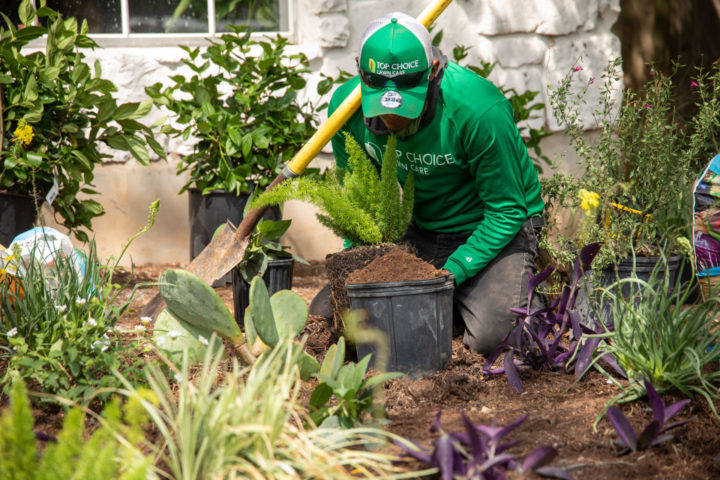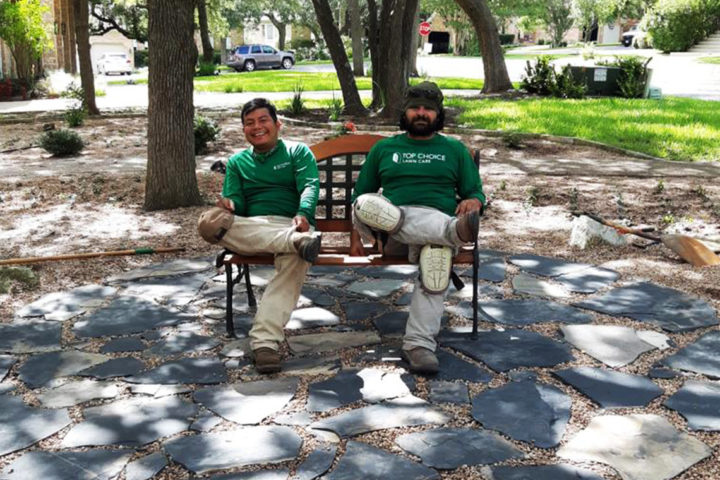As a residential landscape company in Austin, Texas, we understand that not all garden spaces receive direct sunlight throughout the day. Whether you have towering trees or a north-facing yard, creating a lush and low-maintenance shade garden is achievable with the right approach. In this post, we’ll share our top secrets to designing an attractive and sustainable shade garden for your Austin oasis. Are you tired of trying to grow sun-loving plants in your shady yard? Fear not, for there is a solution: a lush and low-maintenance shade garden.
P.S. If your yard is TOO sunny, check out our list of a few favorite shade trees.
Choose the Right Plants
To create a successful shade garden in Austin, start by selecting plants that thrive in low-light conditions.
We have added a short (not all encompassing) list of possible options. Be sure to research which species are native to the area, as they will require less maintenance and be more resilient to local pests and diseases. Additionally, these plants aren’t really in any particular order – they are a mix of trees, shrubs and perennials that vary greatly is size.
- American Beautyberry (flowering): A deciduous shrub that produces clusters of bright purple berries in the fall.
- Inland Sea Oats (evergreen): A grass with attractive seed heads that turn bronze in the fall and persist through the winter.
- Gulf Coast Muhly (flowering): A clumping grass with pinkish-purple plumes that appear in the fall.
- Texas Redbud (flowering): A small tree with showy pink or purple flowers that bloom in early spring before the leaves emerge.
- Texas Mountain Laurel (evergreen): A slow-growing shrub or small tree with fragrant purple flowers that bloom in early spring.
- Turk’s Cap (flowering): A perennial with bright red, tubular flowers that attract hummingbirds.
- Cedar Elm (evergreen): A medium-sized tree with small, rough leaves that turn yellow in the fall.
- Yaupon Holly (evergreen): A small tree or large shrub with glossy, dark green leaves and bright red berries that persist through the winter.
- Coralberry (evergreen): A low-growing shrub with small pink flowers that give way to bright red berries in the fall.
- Lindheimer’s Senna (flowering): A perennial with yellow flowers that bloom in the summer and attract butterflies.

Think About Texture and Color
To create visual interest in your shade garden, mix various textures and colors. Combine plants with glossy, veined, or variegated leaves, and add colorful blooms to brighten up your garden. This will ensure that your garden remains attractive even when the flowers aren’t in bloom. When designing your shade garden, it’s important to think about more than just the type of plants you want to use. Texture and color play a big role in creating a visually appealing garden. For example, mixing different types of ferns with hostas can create a beautiful and varied texture. Adding pops of color with impatiens or caladiums can give your garden a vibrant and eye-catching touch.
Create Layers:
To make your shade garden feel full and lush, plan for different heights of plants. Combine low-growing groundcovers with taller perennials, shrubs, and even small trees to create depth and dimension. In addition to choosing the right plants, the landscape design is also crucial in creating a successful shade garden. Adding a water feature, such as a small fountain or pond, can also create a relaxing and peaceful atmosphere in your shade garden.

Keep it Low-Maintenance
One of the biggest benefits of a shade garden is its low-maintenance nature. In Austin, where the sun can be intense, a shade garden can be a welcome relief from the constant need for watering and maintenance. Choose plants that require little upkeep and consider using mulch to help retain moisture and reduce the need for watering.
In conclusion, creating a lush and low-maintenance shade garden in Austin is possible with the right plants and landscape design. By choosing shade-loving plants, considering texture and color, and keeping the garden low-maintenance, you can create a cool retreat in your own backyard. So, embrace the shade and start designing your perfect Austin shade garden today!

